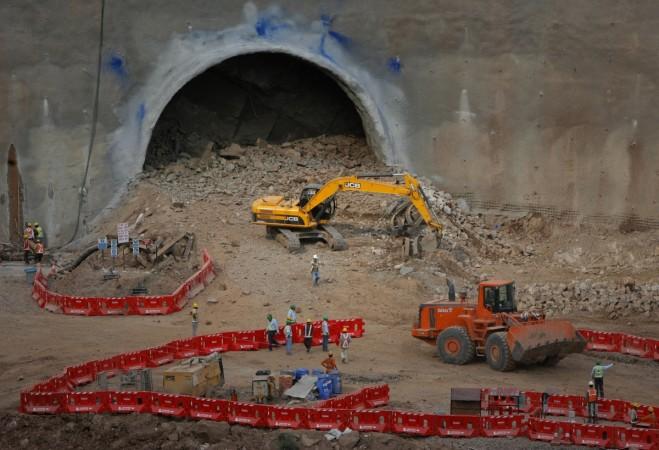
Jammu & Kashmir as a state has been long suffering with road connectivity issues, especially in the winter months. The Jammu-Srinagar National Highway NH-44 (earlier NH-1A) has been the only direct road connecting Kashmir valley with other parts of India. In winters, due to snow, landslides and avalanches this stretch is often blocked for traffic. But that is set to get better to a great extent as India's longest road tunnel and Asia's longest bi-directional tunnel, connecting Chenani and Nashri in Jammu and Kashmir, will be open to traffic from April 2.
Tunnel Of Hope
This engineering marvel, which is being called the "Tunnel of Hope" in Kashmir will be inaugurated by PM Narendra Modi. Residents of the state are extremely happy with this 'superb initiative' as this tunnel will not only reduce their travel time but will also save costs.
India's first & Asia's longest bi-directional tunnel, #ChenaniNashri, to be inaugurated by PM @narendramodi on April 2nd, 2017. Have a look. pic.twitter.com/OurNmhD10Z
— BJP (@BJP4India) March 29, 2017
Remember the Jawarah Tunnel?
While there are a lot of expectations from the Chenani-Nashri tunnel, the 2.85 Km long Jawahar Tunnel has been the only saving grace connecting Jammu and Srinagar for 61 years. In 1956, the Jawahar tunnel which was built with the help of german engineers used to be the longest in Asia.
Now, the10.89 km Chenani-Nashri tunnel is the second part of the ambitious plan of the National Highway Authority of India (NHAI) to redevelop the existing two-lane Jammu-Srinagar highway and construct a state-of-art four-lane highway between the summer and winter capitals of Jammu and Kashmir.
Here are 10 things to know about the Tunnel of Hope:
1. The 10.89 km long tunnel project, which will connect Udhampur with the Ramban district in Jammu and Kashmir, was built at a cost of Rs 2,519 crore.
2. The main bi-directional tunnel consists of a 9.35-metre wide carriageway with a 5-metre vertical clearance.
3. Besides parallel escape tunnels to facilitate emergencies, there are 29 cross passages every 300 metres connecting the two tubes.
4. The structure ensuring all-weather connectivity will reduce the distance between the twin capitals by 38 km or two hours. This will also help in saving Rs 27 lakh of fuel per day.
5. Equipped with traffic control systems approaching from both north and south end; a transverse ventilation system will ensure a supply of fresh air at all times.
India's longest highway tunnel, Chenani Nashri will come with numerous intelligent features. #TransformingIndia pic.twitter.com/a3P9HHn4Ju
— MORTHINDIA (@MORTHIndia) March 25, 2017
6. The tunnel also boasts of a diligent video surveillance, power supply, SOS call box, firefighting and incident detection
7. The reduction in traffic on the bypassed 41 kms will help in preserving the ecology of this sensitive region as a large-scale deforestation will be avoided.
8. The Chenani-Nashri Tunnel will help avoid a few stretches on the National Highway 44 that are prone to avalanches and landslides.
9. Build in a record time of four years, this tunnel will bypass Patnitop, Kud and Batote.
10. Congress vice-president Rahul Gandhi had laid the foundation stone for this tunnel. Union Minister for Road Transport & Highways (RTH) Nitin Gadkari triggered the last blast in the tunnel on July 13, 2015.
Here is what Nitin Gadkari said about the India's first and Asia's longest bi-directional tunnel in Jammu & Kashmir:
Video: Union Minister @nitin_gadkari speaking on #ChenaniNashri Tunnel project in Jammu and Kashmir pic.twitter.com/qxehcZ6e0S
— PIB India (@PIB_India) March 27, 2017







![Limited edition Phone (3a) launched in India; what's special about it [read now]](https://data1.ibtimes.co.in/en/full/825642/limited-edition-phone-3a-launched-india-whats-special-about-it-read-now.png?w=220&h=138)









